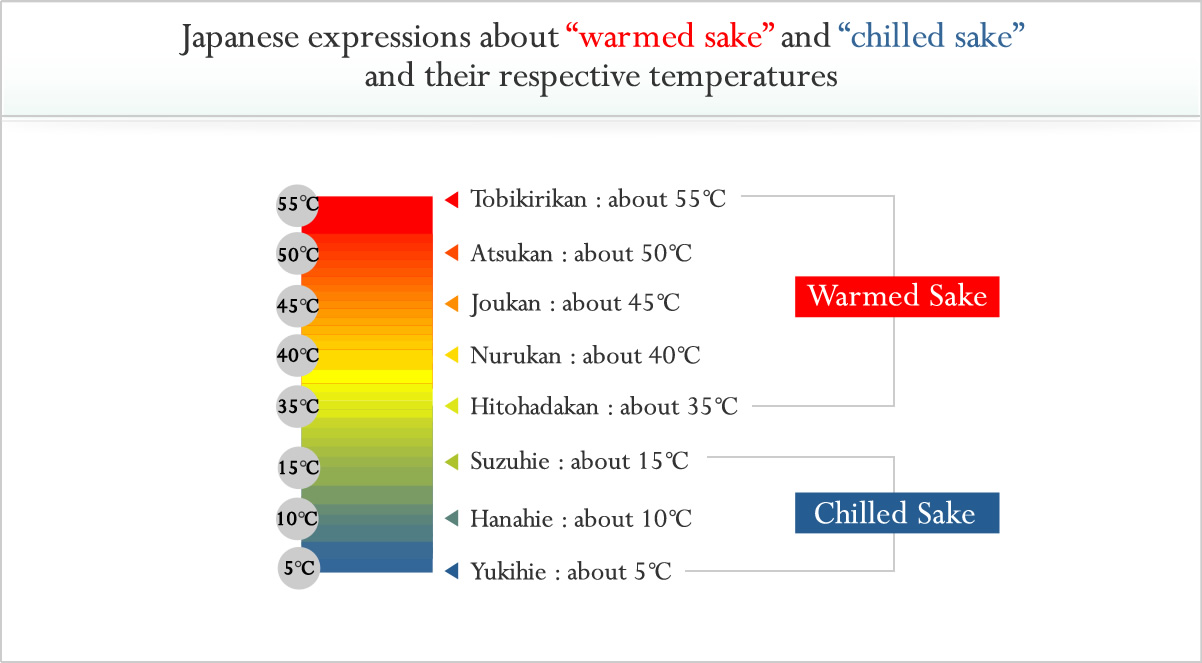Outside of Japan, most people have the image that sake must be served warmed but in actuality, whether or not to warm sake should be up to the type of sake served, the season or climate, and personal preference. While a warm cup of junmai sake may be very enjoyable on a cold or snowy day, a well-chilled glass of namazake (draft sake) may be just the right beverage for a warm summer day.
Namazake and Temperature
Namazake and namachozo are "fresh" sakes which are best serve chilled or over ice. Because these sakes do not undergo the pasteurization process common in other sakes, heating these kinds of sake can result in an unpleasant yeasty smell. To enjoy these sakes at their freshest, fruitiest best, low temperature servings are highly recommended.
Junmai, Honjozo, Futsushu
These sakes are the most versatile and may be served at any temperature between well-chilled and well-heated. Special care must be taken, however, not to overheat. At temperatures over 55℃, the finer characteristics become indistinguishable and the sake assumes an overpowering alcohol odor.


